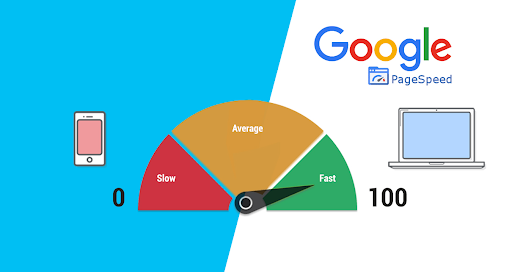What is PageSpeed? How can we improve PageSpeed?

Do you want to boost your website’s pageSpeed for a better user experience?
PageSpeed is one of the key factors of a fast-loading website. There a various ways that you can speed up your website.
What is pagespeed?
Pagespeed is also known as loading speed. Pagespeed is defined as the length of time it takes to load the content of the landing page. SEO point of view, it is essential to have a high or fast pagespeed.
There are a lot of factors that can affect pagespeed like network connection, quantity and type of content, browser, etc.
How to check page load time?
Many tools are available to measure website speed scores. A good practice is to use two tools to check your page speed score. We can use Google Pagespeed Insight, GTmetrix, Pingdom tools, RabbitLoader Google Lighthouse, and Sematext to check the website speed test. Mobile score and desktop score both need to be checked.
A pagespeed insights score of 90 or above is considered a good performance score whereas, A score is between 50-89 considered an average score and it means site speed needs to be improved. And finally, a score of below 50 is considered a poor score.
If the score is below 90 then we need to optimize the website to provide the user better experience and reduce the bounce rate.
How does pagespeed affect SEO ranking?
SEO is defined as the position of your website on any search engine. It’s very important to rank higher to get traffic.
So, this is very obvious that your website pagespeed insight will affect SEO ranking. If your website speed is very slow then visitor lose their interest and leave your website. The bounce rate will increase. It will affect your website on-page time. Webpage on-page time will automatically decrease. So. SEO rank will be affected.
To increase SEO ranking, your website speed should be very fast. That will also make a good user experience and a good conversion rate.
Metrics affect pagespeed and how to improve it.
There are a lot of metrics that affect pagespeed or loading performance. These metrics are known as Core Web Vital metrics. The main pillars of the Core Web Vitals assessment are the Largest Contentful Paint (LCP), First Input Delay (FID), and Cumulative Layout Shift (CLS).
- Large Contentful Paint (LCP): Large Contentful Paint is a measurement of the loading performance of the page. For a good user experience, the LCP score should be within 2.5 seconds.
- First Input Delay (FID): First Input Delay is a measurement of interactivity. To provide a good user experience, the FID Score must be less than 100 ms.
- Cumulative Layout Shift (CLS): Cumulative Layout Shift is a measurement of visual stability. For a good user experience, the CLS Score should be 0.1.
To increase the on-page time and conversion ratio, a high-page-speed website is required. It will also help you to provide a good user experience. Pagespeed index depends on many factors. so, to increase the pagespeed of the website a combination of technical and non-technical solutions is required.
- Optimization of media files and images: A large-sized media file or image can take a lot of time to load. So, it will increase your loading time. To reduce loading time, we need to optimize the media files and images by using online software tools.
- Minify JavaScript, CSS, and HTML: To make an easily understandable code, the coders use space, comments, and a large meaningful variable name. It can take a lot of to load a web page. so, to increase the pagespeed, these unnecessary spaces, comments, and large variable names should be optimized. This will decrease your loading time.
- Cache the website: Caching is used to reduce the loading time of a website and speed up your web Page. caching can store static copies of HTML files, CSS stylesheets, JavaScript files, media files, and images. It minimizes the work for the server to generate content and serve the web page for the users.so, loading time will reduce. It will generate a good conversion ratio.
- Use Content Delivery Network: A content delivery Content Delivery Network is used to reduce the distance between the user and the server by distributing the content across the worldwide server.so, if the distance is reduced between the user and the server, then the loading time will automatically decrease.
- Simple Style calculation: If your page style is very complicated then it will take time to calculate how should the content look. So, It will increase the loading time. To decrease the loading time, the page style needs to be simple.
- Avoid the third-party script: Sometimes third-party scripts or external scripts like Google ads can initiate unwanted tasks. That main thread can be blocked for a long time. It will introduce the Total Blocking Time. we should avoid third-party scripts for pagespeed optimization.
- Use plugins: In the above points, I am explaining the manual process to reduce the load time and increase the PageSpeed. We also can plugin some optimization tools for the same.
After optimizing the website we need to check the loading speed score to understand the improvement of performance. The average page load time should be low to get a better website performance.

 Subscribe
Subscribe

